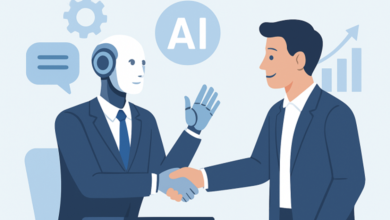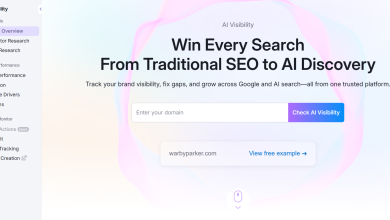
After decades of behind-the-scenes progress and two years of ChatGPT-driven enterprise experimentation, 78% of companies now use AI in at least one function. However, chatbot-based tools haven’t delivered on AI’s broad transformation potential, and companies still struggle to drive tangible returns on investment with AI.
As business leaders face growing pressure to demonstrate real value with AI, three use cases are on the cusp of breaking through and changing how companies operate. But there is one critical — and often overlooked — factor that is the key to unlocking all of these use cases. That emerging factor is data management.
AI Agents
No technology has spurred greater excitement in recent months than AI agents. 93% of enterprise IT leaders expect to adopt the technology within the next two years, and some companies are already implementing agents for simple tasks like email drafting, coding assistance, and handling frequent customer service inquiries.
Agents’ potential goes far beyond simple automation, though, and the technology is quickly becoming capable of operating with true autonomy across a business. For example, Deep Research agents can query public web data and internal company data to conduct competitive analysis, predict market trends, suggest business strategies, and more. Another example is customer service agents, which can provide 24/7 assistance with customer inquiries, troubleshoot complaints, issue refunds or returns, and even upsell products.
However, an agent’s utility depends on its ability to access high-quality and highly relevant data, making a strong data foundation necessary before widespread deployment. Many organizations are finding their data infrastructure can’t support the volume and depth of AI’s requirements, limiting the technology’s usefulness and setting a business up for failure.
As AI agents grow increasingly capable of autonomous and diverse tasks, a company’s ability to effectively manage their data for AI will dictate the level of success they see with agentic deployments.
Physical AI
While AI agents are revolutionizing knowledge work and digital tasks, physical AI is poised to redefine warehousing, logistics and manufacturing. Thanks to on-device sensors and computer vision, robots can now navigate and respond to their environment in real time. For example, AI-powered robots can quickly complete tasks that require exact precision or are physically intensive, such as repeatedly picking up and moving heavy objects. Self-driving trucks can also provide faster delivery times.
The technology is already demonstrating a real-world impact, with Amazon, FedEx and Tesla using physical AI in their operations and startups like Bright Machines, which leverages AI to provide full-stack manufacturing automation, experiencing growing global adoption. Still, AI-powered robots have the potential to undertake even more complex tasks and operate even more autonomously.
As with the broader AI landscape, physical AI is advancing quickly. Nvidia recently announced new generative physical AI models to accelerate physical AI development and help the technology take on increasingly complex use cases. Advances in the underlying physical AI models, as well as the on-device sensors that enable robots to react to spatial data and navigate their environments in real-time, are undoubtedly important.
However, a business’ ability to retroactively fine-tune models with contextual data from sensor readings, video feeds, and spatial data will be crucial to optimize performance for the specific environment the AI-powered robot operates within. It’s this fine-tuning that will dictate much of the success an organization experiences.
Before businesses can use unstructured data like sensor readings, video feeds and spatial data to fine-tune a model, they need to process the data to convert it into formats AI models can understand. Businesses currently aren’t prepared to do this at scale, with over half of companies already struggling to prepare their current volume of unstructured data for AI.
As physical AI becomes more sophisticated, the scale and complexity of an organization’s data infrastructure requirements will only grow. Businesses that build strong pipelines for storing, accessing, and processing sensor and visual data will unlock major competitive advantages. Those that don’t will be unable to fully capitalize on physical AI, no matter how powerful the models themselves become.
AI-Driven Product Development
As businesses face pressure to operate faster and meet growing customer expectations, AI is also demonstrating the ability to automate many aspects of product development. This speeds up development timelines, ensures customer demands are met, and even pushes forward industry-wide advancement.
For example, clothing retailers can leverage AI to design and iterate on a new apparel line, and major companies like Walmart are already using AI to cut production timelines down from months to weeks. AI-driven drug development is also a fast-growing field, promising to significantly reduce drug development timelines and costs and drive more personalized care. As multimodal and reasoning models progress quickly, it’s possible AI will soon be able to automate the entire product development lifecycle.
However, AI-driven product development has diverse data requirements. For a clothing retailer to use AI to design an apparel line, the AI needs to access and analyze customer purchase information, online product feedback, and data from social media discussions about fashion trends. Within most organizations, different types of data are siloed on separate pipelines, making it difficult to give AI quick and holistic access to all the data it needs. Providing a single data pipeline for AI will help organizations take advantage of growing model capabilities to implement AI-driven product development.
While AI agents, physical AI, and AI-driven product development may have seemed futuristic just a few months ago, all three use cases are ready to redefine how businesses operate. The organizations that recognize the importance of data management and invest in modernizing their infrastructure for AI will be positioned to drive value with the newest emerging use cases.




